Free Shipping in the US on Orders $75+


Item added to your cart
Comparing the windrider 17 to the weta trimaran, comparing the weta trimaran to the windrider 17 trimaran.
We frequently get asked how the WindRider 17 compares to Weta Trimaran, so we decided to make this page to explain how they are similar and dissimilar. We also want to give some of the positives of each boat
Similarities:
1. Both day sailors
2. Both small trimarans (very stable)
That is where the similarities between the two boats end. The WindRider 17 was designed to be a pleasure sailor for anyone to use, whereas the Weta was designed to be a racing sailboat that that was more stable than a small catamaran.
WindRider 17:
1. Rotomolded. This allows the WindRider 17 Trimaran to be used anywhere, anyhow without concern of damaging the hull.
2. Capacity. The WindRider 17 can carry up to 6 people, while Weta is limited to 3.
4. Dryer boat. The trampoline design and bow design ensure that the waves break beneath you, not on you. No need for a dry suit to sail this trimaran.
5. Motor mount option. While heretical to some, a motor can be a godsend when the winds die, when a storm is coming or when the current and wind and everything else are working against you.
6. Versatility. The WindRider 17 has more options, more cargo space, so choose the type of sailing you want to do. Then do it.
7. Price. The base price of the WindRider trimaran is less than that of the Weta.
Weta Trimaran:
1. One class design. Weta has a strong base of racing fleets across the world for those people interested in racing trimarans. If you are looking to race, and looking for a small trimaran, this is a great option.
2. Carbon fiber. The use of carbon fiber for the mast and akas helps lighten the boat.
3. Very compact design. When disassembled, the boat is only 14ft long and 5.5ft wide. This makes it great for people that have very little area for storage.
4. Speed. With 3 sails standard the Weta will be faster on the water than the WindRider.
If you are looking for a boat to race, then the Weta is the better option. However, if you just want more versatility at a lower price point, then the WindRider is your best option.
- Choosing a selection results in a full page refresh.
- Opens in a new window.
Boat Review: WindRider 17
By Thom Burns Every now and then I get to review a boat in which I’ve had very close involvement. The development of the WindRider 17 has really been fun to watch. The dealers around the country basically demanded the boat based on their feedback from customers who owned the original WindRider 16 and would be buyers of the WindRider 16 who declined to buy either because they wanted a little more carrying capacity, a second cockpit or both.
Jim Brown who designed the WindRider 16 and the 31’ and 37’ Searunner Trimarans designed this one with the WindRider factory team. He took copious notes and accepted a massive amount of input. I was wondering just what he would come up with initially. Then I saw the first prototype. I was impressed.
I’ve been sailing the prototypes now for two years every chance I get. Last summer Mike McGarry, the product manager, and I toured the final prototype through the Midwest. It was enthusiastically received everywhere. Design and Construction The WindRider 17 is rotomolded polyethelene which keeps the price down. All structural reinforcements are anodized aircraft aluminum. This allows the boat to be light and reasonably stiff. The amas telescope in and out with no disassembly. The nets are large, bolt roped to the hull and support optional stiff-backed seats. The center hull has an aft cockpit, the primary driving position, and a larger forward cockpit. The forward cockpit seats two and the hard seat reverses itself to face the driver.
The mast is light weight and rotates which dramatically improves the performance of the full-battened mainsail. The main jiffy reefs on the boom with one line. The optional jib is on a Harken roller furler. The sheets lead to two Harken cam cleats.
| |
Part of the innovation is how this boat is trailered. It slides on rails on and off the trailer. This perfectly centers the boat and all 320 lbs. is supported by four aluminum pads. The shrouds and nets stay permanently connected. This keeps the launch and retrieval time to a very manageable ten minutes for a solo sailor, less for a couple. This approaches runabout launch and retrieval times. Simplified Concept WindRider has strived to make their boats totally easy to sail. In order to do this, WindRider has eliminated the tiller unless you want one. You sit in a comfortable seat and steer intuitively by pushing your left foot to turn left and your right to turn right. Your facing forward without twisting around. There’s a single mainsheet or a mainsheet and jib both of which are running through cam cleats for ease of handling. All controls are within two feet of the driver.
The wide beam of the WindRider 17 gives it great stability. It is not impossible to tip this boat over under main and jib, but it’s close. You will not capsize this boat unless you work hard at it and refuse to release the main and/or jib sheet.
The carrying capacity on this boat is so great for a 17 footer that it will easily carry four adults and a couple of kids. The optional net seats are ergonomically well designed and comfortable. They feel like soft seats, not benchs. Performance Wow does this boat tack. It doesn’t get much easier than pushing your foot and stopping when the main fills on the opposite tack. For even faster tacks, back the jib for a moment as the boat sails through the wind. Jibes are a cinch compared to most small boats because the boom is way high over everyone’s head. Even if it’s not real smoothe, there are no headaches and no swim. The boat is quick, on the edge of fast. In ten knots we were going upwind at 7 to 8 knots. On a beam reach the speed picked up to 9 to 10 according to my GPS. In gusts to about 12 we were hitting 10.5 no problem. Later in about 15 knots of wind we were cruising at 12.5 in 2 plus foot chop and the boat was dry. No water in the boat, an occasional drop or two in the face, but no heavy duty spray. Conclusion
| Alexis Olson carrying on an animated conversation from the front cockpit on a chilly day in October. |
This is an exhilarating boat which is even more than what the builder and designer wanted. It is quick, it is fun to sail, it is easy to launch and retrieve. It will make a great day sailor. It will be a good camper sailor for the adventurous. It will be an excellent one design racer/cruiser for those who want to go quickly with ease. Where strength and agility will not determine the outcome of a little friendly race.
The thing that turns me on the most is how it empowers the young and the non-sailors who seem to intuitively pick up the nack of sailing. Try this boat, you won’t believe you’re only sailing a seventeen foot boat.
Thom Burns publishes Northern Breezes and Sailing Breezes Internet Magazines. Northern Breezes: 763-542-9707
WindRider: 612-338-2170 www.windrider.com
Welcome to our store
Item added to your cart
The windrider 17 trimaran, a nearly perfect sailboat.
The most versatile sailboat in the WindRider Trimaran clan, the WindRider 17 has features to please just about everybody. With the affordability of this boat we are bringing the joy and pleasure of sailing high-quality boats to as many people as possible. We bring outstanding quality for the price.
The boat is easy to sail and operate. Anyone will have confidence with stability and control. The boats controls are very intuitive. You steer left by pushing your left foot and steer right by pushing your right foot from the comfortable cockpit. Steering with your feet leaves your hands free to operate the sails. All controls are easily accessed and within close proximity of the cockpit no twisting or bending required. The boat is very quick, all while staying extremely dry.
The mast is lightweight and rotates improving performance of the full battened mainsail, giving way to great visibility. The boat is constructed of rotomolded polyethelene which is very durable and less maintenance than fiberglass. The 17 is so easy to trailer it slides on rails to be put on and off the trailer and can be towed behind most vehicles. The launch and retrieval time of the boat for a solo sailor is about 30 minutes and 10 minutes for 2 or more sailors.
This boat offers a fine combination of excellent sailing performance with a comfortable face forward cockpit seating. The sailing capacity is quite large with up to 6 adults. In addition to the main cockpit there is a larger forward cockpit for your passenger and the cushioned seat reverses to face the captain. The optional stiff backed net seats, which are very comfortable and soft, will allow the boat to easily carry 4 adults and 2 kids. The nets are also perfect for lounging and relaxing.
Social or family sailors can spend the day beach-sailing with the spouse, the kids, and their friends. The single-line roller-furling jib makes it easy to tune the ride, offering an easy and stable ride for the youngsters or fast and wet for the teens. The 17′s shallow draft makes it a natural for swapping rides off the beach, or throw down an anchor and furl the sails to create a huge swim platform with lots of places to grab on and rest. The trimaran design makes it nearly impossible to capsize, while giving the ability to go fast.
The WindRider17 is a great day sailer that can be used for extended trips. Camp-cruisers can pack enough gear for week-long adventures into the 17′s covered, dry center cockpit, or use drybags and pack it on the trampolines and take a passenger as well.
Performance sailors can add the optional Turbo Reacher kit for an adrenaline rush that'll make the jet-skiers envious.
This is what's included in one sleek, easily-managed trimaran package:
- Fully-battened main sail on a rotating mast
- Roller-furling jib for total control
- Telescoping hull beams for easy setup and trailering
- Trampolines between the hull beams for relaxing or extra passengers
- Foot-pedal steering for single-handed versatility
- Dual cockpit covers
- Built-in bilge pump
This boat is great for the experienced and first time sailors alike. Take this boat for a fun family day trip or be adventurous and take it out for several days. It is quick, easy to launch, sail, and retrieve. It is comfortable, safe, and affordable. This boat is a vision of beauty and function which will make you fall in love. We have boats stationed all over the country making them easy to test sail and look at. Don't Wait! Try one out Today!!
Contact your nearest test location and experience a WindRider Trimaran today!
Click here for WR17 specifications Click here for WindRider Warranty
Top 10 reasons to buy a WindRider 17 Trimaran
{{widget type="webforms/form" webform_id="2" template="webforms/default.phtml"}}
Subscribe to our emails
Be the first to know about new collections and exclusive offers.
- Choosing a selection results in a full page refresh.
- Opens in a new window.
July / August Issue No. 299 Preview Now
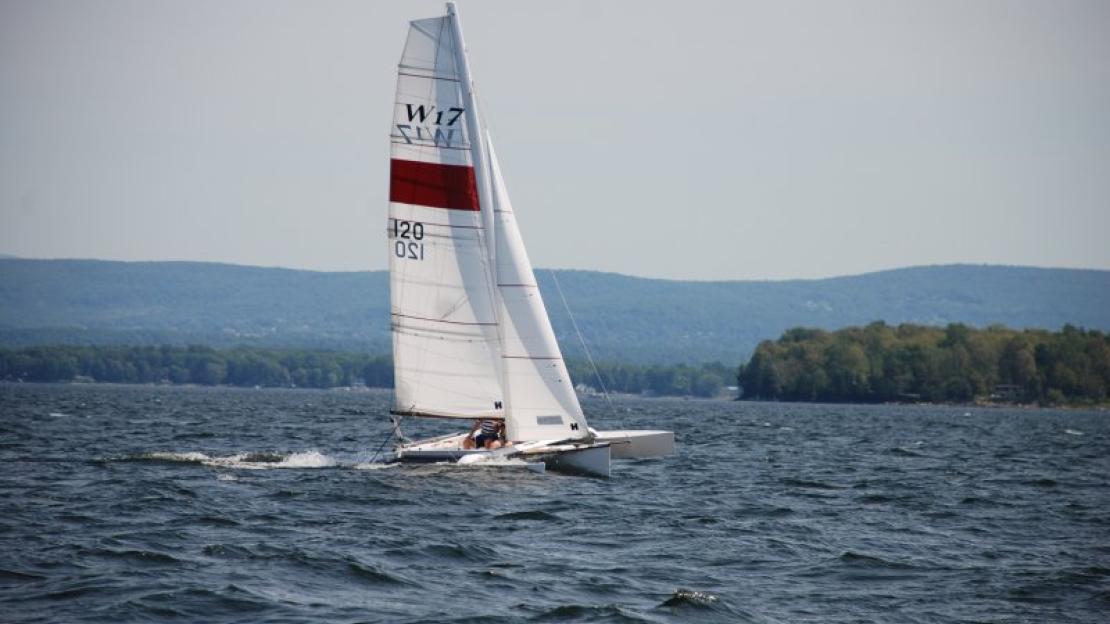
W17 trimaran
A strong, capable folding trimaran with exceptional overall performance. Professionally designed to be dry and comfortable, yet fast and fun. Plans now in 33 countries and plywood kits available in the USA, Australia and Europe. Plans only US$195.Photos, videos and design details available on this website: www.smalltridesign.com . Boat also in dependently reviewed by Geoff Kerr of WoodenBoat Magazine in January 2017. See published articles on the website.
Design Specifications
Naval Architect Mike Waters, at << [email protected] >>
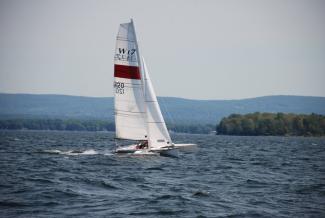
ACCESS TO EXPERIENCE
Subscribe today.
Publishing dynamic editorial content on boat design construction, and repair for more than 40 years.
1 YEAR SUBSCRIPTION (6 ISSUES)
Print $39.95, digital $28.00, print+digital $42.95, from plans & kits.
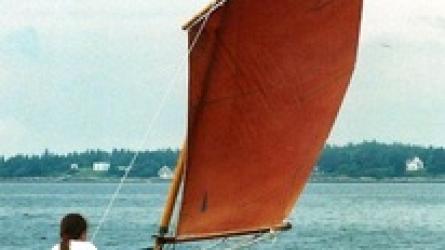
Norwegian Sailing Pram
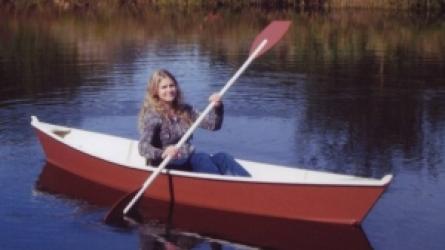
Viola 14 Sailing Canoe. Dinghy stability with canoe compactness

From the Community
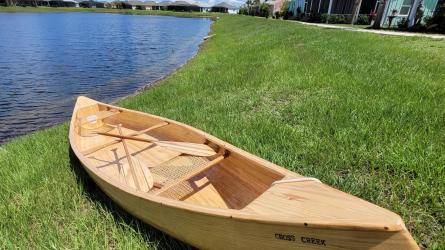
Handmade wooden canoe
Beautiful hand built wooden canoe. Design modeled on the Wabanaki Indian canoes of Maine.
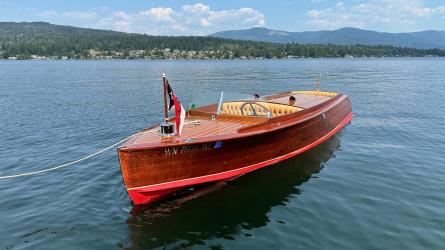
1929 Hacker Craft Runabout 18'
Jimmy Steele Peapod
Good Vintage Boat - Hull Number 66 - Completed In 1989.

Boats Plans and Kits
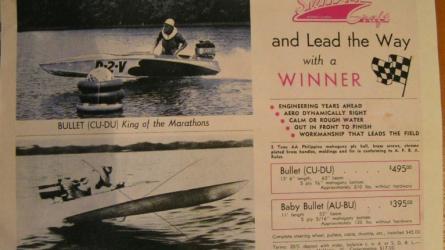
Switzer Bullet 136
Log in or Sign up
You are using an out of date browser. It may not display this or other websites correctly. You should upgrade or use an alternative browser .
W17 Trimaran contact
Discussion in ' Multihulls ' started by fzr1483 , Sep 22, 2018 .
fzr1483 New Member
Hi there, I have been interested in building a small, daysailor trimaran for a while with the following requirements: -must be able to single hand as I will most often be sailing with 2 toddlers as crew -relatively dry sailing. The main reason I want to build a tri, is that I'd like to have a cockpit and some dry storage. I ruled out commercially available boats like the Hobie IA, Weta (which I can't afford anyway), or beach cats for the reasons above. -LOA less than 18 ft due to workspace contraints. -trailerable and easy to launch with one adult. This requirement leads me to folding tri's with a shallow draft -intented sailing will mostly be in inland or sheltered water. However coastal capability for raid style event would be ideal. -I don't plan to race. For sailing with my girls, I'd prefer something that is lively but not difficult to handle. -self bailing cockpit i feel is crucial. I don't expect 2 toddlers to be very helpful when it comes to bailing. -since I have never built a boat before, I would be a plus if either 1) several boats have already been built, where I could find build logs or ask builders if I have wuestions or 2) the designer is actively supporting the design. My short list consists of the W-17, Strike 15, and Seaclipper 16 OC. I think all 3 boats fit the bill. I have read a few sailing reports and magazine articles on each of the boats. Any additional feedback regarding which boat may be most suitable would be greatly appreciated. Does anyone know if Mr. Mike Waters is still actively supporting the W17? Is he W17 Designer on this forum? I had submitted some questions regarding his W17 on the smalltridesign website and haven't heard back. I do really the design of the W17 and the option of a wing mast. I already know that the initial rig for whichever boat I build, will most likely be a used beach cat rig. But as an engineer, I like to geek out about the possibility of building a wing mast.
Pshapiro New Member
I’m starting to build a W17 myself, and can confirm that Mike Waters is still actively supporting the W17, and is W17 Designer on this forum. I’ve found that he always replies to questions, but it may take a couple of days, and he seems to take weekends off. I looked at the same options you mention while trying to decide which tri I was going to build, with many of the same requirements, and ultimately decided the W17 was my best choice. My thinking on the other two ran as follows: 1. Seaclipper: I now sail a CLC kayak with their SailRig option, and after two summers with it, really miss being able to move around, so anything with kayak seating was out of the question. It’s just too limiting for me. 2. Strike 15: I went as far as buying the plans for this one, but was unable to find a lot of support from other builders, and it seemed to me that the designer sailed the prototype a few times and then sold it, so not a lot of ongoing development. I also spent a lot of time searching for the used rig components and found that the good ones available weren’t cheap. When I did a cost comparison between this design and the W17, there really wasn’t enough difference to push strongly in favor of the Strike. And once I found myself trying to modify the looks of the Strike to more closely resemble the W17, I realized that obviously the W17 was what I really wanted, so I ordered the plans from Mike Waters. While I have yet to really start construction, I can verify that his plans are incredibly detailed and his manual is very complete, and he has been quick to reply to my questions. He is actively involved with updating the plans and manual as improvements are made by other builders and himself. I still feel that I made the right decision.
upchurchmr Senior Member
fzr, Check out this previous thread. W17 Trimaran? https://www.boatdesign.net/threads/w17-trimaran.57083/ We have similar desires. The W17 Designer replied, but I think he got irritated with me. Good luck.
Doug Lord Flight Ready
upchurchmr said: ↑ fzr, Check out this previous thread. W17 Trimaran? https://www.boatdesign.net/threads/w17-trimaran.57083/ We have similar desires. The W17 Designer replied, but I think he got irritated with me. Good luck. Click to expand...
I never worried about it while thinking about a tri. A catamaran doesn't require a big heel angle, which is all I have experience with. But I have flown a cat (daysailor) at 45 degrees, but it was just for fun, you don't sail well at such a high heel. I wouldn't want to have the ama's in the water at rest, due to poor performance in light air - which is the major way I know to reduce heel angle. Another way is to insure low total weight, so the main hull doesn't have to be fat and deep. The only other way I know is to have ama's that are relatively wide for their buoyancy, so they don't immerse deeply. But that is reported to cause a jerky ride when waves hit the ama's - not that I would care in a daysailor (I think). You'd be better off discussing this with a F-27 sailor (or 25, 24, 22, 28, etc.)
I was just curious what you'd want in a tri. I read that you wanted a tri that would fly the main hull so I thought maybe you had given the angle some thought.......
I just don't consider it important. People have been sailing mono's for 100's of years with varying degrees of heel. A generic tri should be less heel, until it's going upside down - not very desirable. So you will have to actively control a tri more than a mono. That is just part of the package. It's like saying you should not run a car off the road. People just accept that as part of the limits of driving a car and don't think about it much.
thank you all for the quick responses. PShapiro, good luck on your build. Realistically, I don't believe that I will have a work space cleared out for another few months. I hope that you will have made some headway on your build by them. Then I can pick your brain if I run into any problems. Upchurchmr, your thread was one of the many that I read while doing my research. Since that post, the articles Mr. Waters referred to have been made available on his website. I have read those as well. For my SOR, I believe that ultimate performance and the ability to fly the main hull is not a very high priority. That is not to say that I wouldn't consider letting a friend, who is a much better sailor than I am, skipper and see what the boat could do. So knowing and understanding the design limits of the boat is still very useful information.
- Advertisement:
We all have different requirements, desires, and bias. This may be a very good boat for your SOR. Many do not need or want to fly a main hull. Some other famous designers have taken the path of relatively small amas to prevent flying. Good luck. I would suggest looking at a Cross 18, but the person who could supply plans appears to not care any more. To my knowledge no one can contact him. P.S.: I did have a conversation with a Cross 18 owner. He described sailing in a high wind when he believed he was "planning" the boat. Given the displacement hull form, I believe he had flown the main hull, noticed an increase in speed and a decrease in water noise - but didn't understand what had happened. Apparently it was not frightening or a concern in any manner. Of course, he might not have understood how close he "might have been" to flipping the boat, since the stability curve drops off fairly quickly.
Floating island - Trimaran or Catamaran?
Design of wood epoxy trimaran beams
Normon Cross Trimarans
Trimaran Build
FAO 7.8 meter trimaran ocean capable?
Best free CAD for trimaran design
Unstayed mast build for small canoe based trimaran.
Looking for a build plan for a tuff trailerable, weekender, beachable trimaran?
Dual pair shrouds on trimaran
storm sail on older trimarans
- No, create an account now.
- Yes, my password is:
- Forgot your password?


COMMENTS
My Review of the W17 trimaran ,..... (by André Baetz, August 2023) Great to have two boats as we could sail against each other to compare things. Both boats (called Magic and Merlin) felt very solid and other than the integrated hinges on the beam tops, there is no physical indication that the boat is foldable for a trailer.
W17 Trimaran? Discussion in 'Boat Design' started by upchurchmr, Jan 15, 2017. Page 1 of 2 1 2 Next > Joined: Feb 2011 Posts: 3,287 ... Solar Trimaran concept - please review. kerosene, Oct 22, 2020, in forum: Boat Design. Replies: 8 Views: 3,219. SolGato Apr 23, 2021. Foil design for my motor trimaran ...
Here's a brief review of the race program and some pics: Hobie Challenge. July 8th, 2011. ... and easy handling with high-tech sailing. But in his W17 trimaran, designer Mike Waters has synthesized 60 years of sailing high-performance boats, 30 years of professional ship design, and 35 years of owning trimarans, to conquer these apparent ...
The W17 Trimaran • Design Information: See ALSO here - under 'Published Articles' Preliminary Design Concept and Development (January 5, 2010) Review of W17 Hull Forms (November 21, 2010) - Added Info May 2024 Intro Part 1—The W17 'Estuary' Trimaran (February 4, 2010) Study Profile (March 16, 2010, updated May 18, 2015) W17 Racing Rig ...
W17 Trimaran. 03-27-2023, 11:29 AM. I just enjoyed reading through Lee's thread on his build. It coincided with me bumping into the W17 ( https://smalltridesign.com) I have been reviewing designs for a while now, was enjoying reading about the Wharram cats but two wet for me.
The base price of the WindRider trimaran is less than that of the Weta. Weta Trimaran: 1. One class design. Weta has a strong base of racing fleets across the world for those people interested in racing trimarans. If you are looking to race, and looking for a small trimaran, this is a great option. 2. Carbon fiber.
On a beam reach the speed picked up to 9 to 10 according to my GPS. In gusts to about 12 we were hitting 10.5 no problem. Later in about 15 knots of wind we were cruising at 12.5 in 2 plus foot chop and the boat was dry. No water in the boat, an occasional drop or two in the face, but no heavy duty spray. Conclusion.
This video shows the efficiency of the design. Sailing frequently at windspeed - with minimal fuss through the water. Quiet and smooth. Professionally...
The October-November 2017 issue of Professional Boatbuilder, #168, which has the article by Mike Waters about his W17 trimaran design can be downloaded for $5.95 at the WoodenBoat Store website: ... Solar Trimaran concept - please review. kerosene, Oct 22, 2020, in forum: Boat Design. Replies: 8 Views: 3,164. SolGato Apr 23, 2021 ...
And good for you 'OldSailor'. I know that takes lots of planning and foresight. An impressive achievement for a 3 hull trimaran. Using tube or extruded beams and waterstays is certainly a time saver (used on my W22 also). Too low on a 17 footer though and we like the look of the W17 beams anyway ;-) mike www.smalltrimarandesign.com
The trimaran design makes it nearly impossible to capsize, while giving the ability to go fast. The WindRider17 is a great day sailer that can be used for extended trips. Camp-cruisers can pack enough gear for week-long adventures into the 17′s covered, dry center cockpit, or use drybags and pack it on the trampolines and take a passenger as ...
w17 This is an ultra efficient, modern folding trimaran design with advanced features not found elsewhere. As WoodenBoat Magazine confirmed in their 2017 independent test report (WB#254), she is of uniquely easy construction, yet with sophisticated engineering and great looks; is easy handling and fast, yet dry and comfortable, and is more ...
Estimated weight: ~410 lbs (185 kg) Estimated construction time: 450-600 hrs. Estimated cost of materials: $4200-$7900 (2020) depending on country, source and quality. Optional. Reacher/drifter: 9.6 m² (103 ft²) Assymetrical: 12 m² (130 ft²) Designed by: mike waters n.a.
W17 Trimaran with a gentle spinnaker ride. Chance to see the spacious cockpit and smooth ride. Note the slicing of water at the bow with minimum disturban...
Despite the simple main hull, the W17 is very advanced in many other ways and those who know, will recognize these aspects by looking deeper into the design. This design was not just thrown together with a 'hope it works' attitude ... it was designed TO work and meet its designed objectives, right from its birth.
W17 trimaran. A strong, capable folding trimaran with exceptional overall performance. Professionally designed to be dry and comfortable, yet fast and fun. Plans now in 33 countries and plywood kits available in the USA, Australia and Europe.
Naval architect, Mike Waters, provides a highly technical review of nine small folding trimarans, including six homebuildables. Review of nine small, folding day-trimarans (2010) by mike waters n.a. April 2010. As for all ... Although Jim's boat sides are a little more veed than either my W17 or Richard Woods' new Strike, ...
What can the W17 trimaran offer as an alternative for dinghy cruising? Since being first introduced in 2010, the W17 has grown to be appreciated by sailors worldwide as one of the most advanced and interesting small boats in the 16-20ft size range, with nearly 200 examples either planned, building or sailing in 33 countries. The design is a ...
W17 is an open, 17 ft. trimaran designed by Canadian naval architect Mike Waters. Plans are available to build yourself. ... review of other small trimarans; etc. W17 sailing. W17 with swing wing folding. W19 is an extended W17 with fixed windscreen and a single berth; it has swing arm folding, is 6 m long and weighs 340 kg. 1.
Building method explained for the W17 homebuildable, folding trimaran Intro Part 2—Building the W17 Trimaran ... Preliminary Design Concept & Development Review of W17 Hull Forms Intro Part 1—The W17 Design Intro Part 3—Build Manual & Plans W17 Study Profile Order Plans. February 15, 2011.
You may not have noticed but somewhere on the website it does give a partial list of other small tris that I planned to review for a second report and the B24 was certainly there. I've just had to put that aside for the moment to look after the website, W17 and W22. ... W17 Trimaran contact. fzr1483, Sep 22, 2018, in forum: Multihulls. Replies ...
As this is a folding trimaran, each beam (aka) is made up of 3 parts. Two curved ends and one straight part stretching over the main hull. As these beams take a high bending load, they are substantially built, using interior wood framework with an outer covering of plywood. Once built, this straight part lays on top of the fore-&-aft decks, so ...
People have been sailing mono's for 100's of years with varying degrees of heel. A generic tri should be less heel, until it's going upside down - not very desirable. So you will have to actively control a tri more than a mono. That is just part of the package. It's like saying you should not run a car off the road.